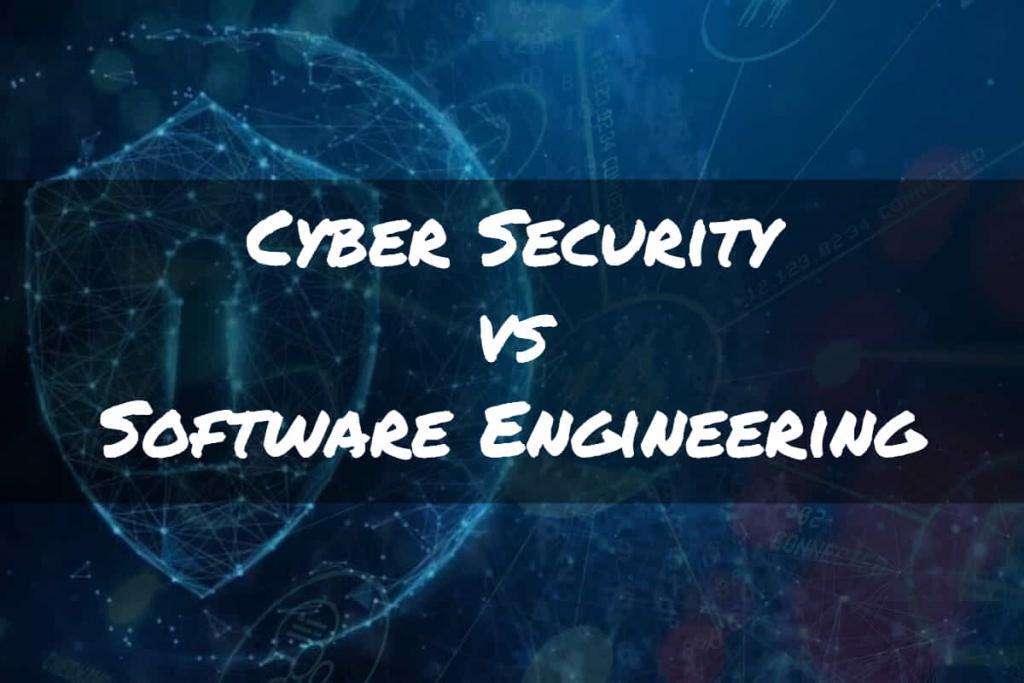As you stand at the start of exciting new professional paths, your cybersecurity portfolio is the backpack that carries your story.
So, if you’re ready, grab your map, embrace your past explorations, and let’s chart a path that will not only showcase your accomplishments but also reflect the dedication that defines your cybersecurity journey. The trail awaits, and your portfolio is your guidebook.
Let’s embark on this exciting journey together!
What is a Cybersecurity Portfolio?
In case you’re wondering, a Cybersecurity Portfolio is a curated collection that encapsulates the professional and academic works that you’ve created as part of your cybersecurity journey. Building this portfolio isn’t merely an act of organizing a résumé or a summary of credentials; it’s a craft.
Think of it as a tangible or digital showcase that gives an in-depth insight into who you are, what you’ve achieved, and what you can offer. It’s about weaving your experiences into a compelling narrative, and presenting them in a way that resonates with employers.
What Should be Included in a Cybersecurity Portfolio?
A well-thought-out security portfolio should encompass your professional narrative, beginning with your résumé that outlines your work experience and special achievements. Much of that will be discussed below.
However, the real difference between a resume and portfolio is that your portfolio must reflect your unique style; it should be visually appealing, well-organized, and easy to navigate. In essence, your Cyber Security Portfolio is not merely a collection but a vivid showcase of your cybersecurity saga.
Where to Start Creating My Cybersecurity Portfolio
In order to make your portfolio accessible to everyone, it’s got to be available online. Get your start on Wix or Squarespace as both of these platforms can have you up and running within a matter of hours.
If you’re looking for more feature rich capabilities or plugins, you could try Themeforest which provides ready-made websites. Just keep in mind, there’s a bit of a learning curve, and it also requires you to spend money for hosting the site.
Understand Your Audience
You’ve decided to make yourself open to a new role, but before you hit that “submit” button, pause for a moment.
It’s important that your portfolio matches the vibe of your experiences, and that it also comes across in a way that’s visually appealing to your audience. What’s equally important to know is if your portfolio’s really displaying the breadth of your capabilities?
Do others see a person that’s only good at one thing, or are you a jack-of-all trades? Create separate sections or pages that are specific to the types of roles you’re capable of; thereby, making it easy for employers to parse through your background.
For instance, if you have experience on Red Teams and Blue Teams, don’t mesh them together. Have one section that’s specific to your red teaming knowledge and capabilities, and another section that dedicated to blue teaming.
Tips:
- Use visuals and infographics to make your portfolio engaging. Spend the time to look at how your colleagues or others cyber professionals design their sites. Use just enough to get the job done and no more.
- Choose a design that aligns with your personal brand. Don’t choose a color pattern or design that doesn’t work for you as it could cause potential employers to back away. Getting a second opinion is helpful.
- And most importantly, keep the layout clean and easy to navigate.
Remember, understanding your audience isn’t about grand gestures or major overhauls. But the effort you do put into your site will show you care enough to make an impression.
Add an Educational Background to Your Cybersecurity Portfolio
Your educational journey is the foundation of your career in cybersecurity. It’s more than just degrees; it’s tells the story of your academic accomplishments and how they align with your career goals.
Steps:
- Detail Your Degrees: Include the institutions, majors, minors, and any special recognitions. Mention relevant courses that align with your cybersecurity focus.
- Showcase Relevant Projects: If you’ve worked on specific academic projects, research, or collaborations that relate to cybersecurity, detail them here. Explain your role, what you learned, and how it applies to your career.
- Emphasize Your Approach to Learning: Discuss how your educational path reflects your approach to problem-solving, innovation, or other qualities relevant to the cybersecurity field. Whether through unique course selections or self-directed learning, show how your education shaped your professional outlook.
Tips:
- Tailor to the Roles. Emphasize the aspects of your education that relate directly to the type of roles you’re applying for.
- Include Lifelong Learning. If you’ve taken workshops, online courses, or other continuing education, include them. Learning doesn’t stop with formal education.
- Be Authentic. Share what genuinely excites you about your educational journey. Authenticity resonates.
Your educational background isn’t just a summary; it’s a story that connects your learning to your professional aspirations. By including it in your portfolio, you provide a comprehensive view of your qualifications and help potential employers understand the path that led you to your current career stage.
It’s a vital part of what makes you unique in the cybersecurity field.
Highlight Your Skills in the Cybersecurity Portfolio
Think of your skills as the tools in a toolbox. When it comes to your portfolio, you’re not just listing these tools; you’re showing how you’ve used them.
Remember the last time you fixed something around the house? You didn’t just tell everyone you had a toolbox; you showed the fixed item and explained how you did it.
That’s what this section is about; your portfolio needs to go beyond listing skills and get into showing them in action.
Steps:
- Identify Your Key Skills: What are the tools in your toolbox? These are the skills that define your expertise in cybersecurity.
- Provide Context: How have you used these tools? Share examples of problems you’ve solved, projects you’ve worked on, or contributions you’ve made.
- Link to Evidence: If possible, include links to projects, write-ups, or anything that can showcase your skills in action.
Tips:
- Think about the roles you’re aiming for. What tools are they likely to need? Make sure to highlight those.
- Be concise but clear. Think of how you’d explain fixing something to a friend, not a fellow expert. Make it relatable.
- If you have a skill that’s unique or not commonly found, make sure to emphasize it.
Your skills are your tools, and your portfolio is where you show how you’ve put them to work. It’s not about rattling off a list; it’s about painting a picture of what you can do.
Your portfolio should make your skills tangible, real, and relevant; in other words, show people what you can do with those tools!.
Showcase Your Achievements
Remember the feeling of scoring a goal in a game or nailing a presentation at school? It’s that sense of accomplishment that’s so rewarding.
Your achievements in cybersecurity are like those personal victories, and your portfolio is where you get to share them. Your achievements aren’t just badges or trophies on a shelf.
Again, they’re stories of how you overcame challenges, learned new things, and made an impact. It’s like telling your friends about that fantastic goal or the audience’s reaction to your presentation.
It’s personal, it’s real, and it’s proof of what you can do.
Steps:
- Choose Your Achievements Wisely: Pick the moments that really stand out, where you felt that sense of accomplishment and growth.
- Tell the Story: What was the challenge? How did you tackle it? What was the outcome? Make it engaging.
- Show the Impact: If possible, share numbers, feedback, or anything that can quantify or qualify what your achievement meant.
Tips:
- Think about what a company or role would value and align your achievements with those areas.
- Keep it authentic. Your achievements don’t have to be world-changing. Sometimes, the small wins tell a more compelling story.
- Use visuals if possible. A chart showing growth or a screenshot of a positive review can add a nice touch.
Your achievements are your victories in the game of cybersecurity. They show your growth, your impact, and your ability to get things done.
They’re not just for you; they’re for those who want to know what challenges you’ve encountered, and what you’re capable of.
Your Cybersecurity Portfolio Should Include Personal Projects
Have you ever had the satisfaction a meal from scratch? It’s that same creativity and personal touch that you’ve likely also applied to your personal cybersecurity projects.
These projects (separate from academic projects or research), like your cooking, tell more about who you are and what you love to do. It’s a glimpse into your passion for security and your willingness to explore and experiment.
Steps:
- Select Your Projects: Pick the ones that really resonate with what you love about cybersecurity. What have you created or explored just because you wanted to? This is also a great place to list any blogs, papers, or presentations you’ve created.
- Describe the Journey: Share what inspired you, what you did, what you learned, and why it mattered to you.
- Include Supporting Materials: Screenshots, code snippets, or links to the project can make it come alive.
Tips:
- Keep it relevant. Choose projects that align with your overall story or the specific role you’re applying for.
- Show the process, not just the end result. How you approached the project can be as telling as what you created.
- Make it accessible. Remember, the reader might not share your expertise, so explain it in a way they can connect with.
Your personal projects shows your initiative and the spark that drives you even outside of your job. Including them in your portfolio might just be the ingredient that sets you apart.
Include Certifications and Achievements
Those certifications and achievements are milestones in life that signify accomplishment and recognition. In the world of cybersecurity, certifications like CISSP or others are similar milestones.
They aren’t just pieces of paper; they’re markers of your dedication and professional growth. Why wouldn’t you want the employers to know?
Steps:
- List Certifications: Include all relevant certifications, big and small, that you’ve earned in your career.
- Detail the Significance: Explain what each certification means within the industry, much like explaining why a diploma or license was important to you personally.
- Include Other Achievements: If you’ve received awards or recognitions, include them too. These are the extra accolades that add flavor to your professional story. Highlight specific projects you’ve tackled, from thwarting cyber threats to implementing security protocols, as these are the real-world battles you’ve fought and won.
Tips:
- Keep this section organized and easy to scan, like a trophy shelf or a wall of diplomas.
- Include certifications that are recognized and respected in the industry, akin to the important milestones in your personal life.
- Don’t be shy to include achievements that may seem small but were meaningful to you. Sometimes, those little victories tell a big story.
Remember, your certifications and achievements are a glimpse into what you’ve conquered and what you aspire to. Share them with pride and make them prominent!
What Else Can Be Done for Your Cybersecurity Portfolio?
If you’ve participated in hackathons or security conferences, make sure you spend the time to mention them and what you got out of it. Also, don’t shy away from adding testimonials or references; they’re the perfect way to let the people who you’ve impressed over the years give back to you.
Once your portfolio has everything ready, make sure it’s SEO friendly. Soon thereafter, promote your cybersecurity portfolio to social media sites, email old colleagues, create a free online business listing, or even advertise your site on Google. Do whatever you can to get your name and experience in the hands of the people that need them.
Conclusion
Ultimately, crafting your cybersecurity portfolio is a multifaceted journey that encapsulates your skills, experiences, achievements, personal projects, and much more. It’s a living document, breathing and evolving with you as you traverse the ever-changing landscape of cybersecurity.
Every word that you write comes together to form a narrative that’s uniquely yours. Keep in mind, your portfolio is more than a key to your next job; it’s a reflection of your passion and identity.
The world awaits your talents, and your portfolio is the invitation to explore endless possibilities. Happy crafting!
Looking to upgrade your career?
View our listing of cybersecurity jobs!
Interested in More…
Making the Switch to Cybersecurity: Unlocking a New Future!
90 Cybersecurity Resume Tips to Help You Land an Interview
How to Prepare for A Cyber Security Interview (20 Tips)



